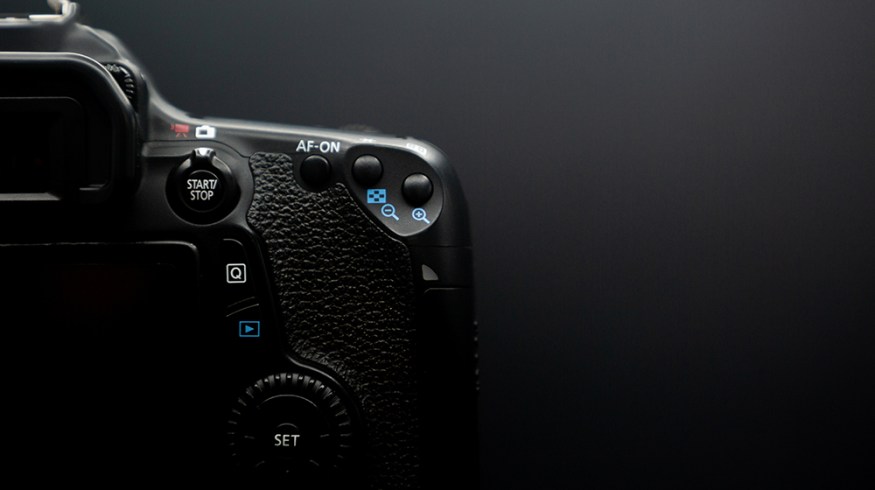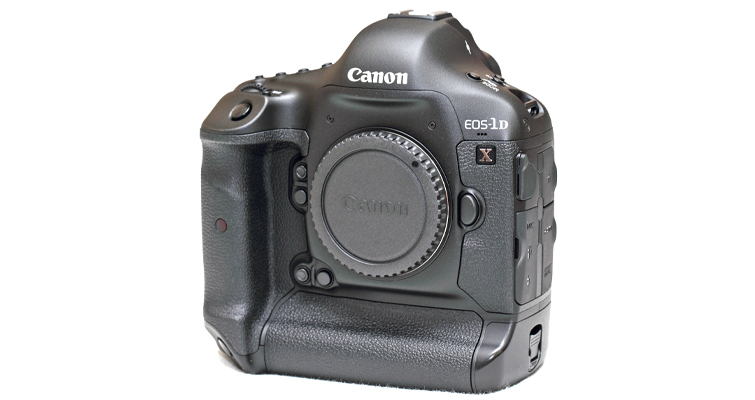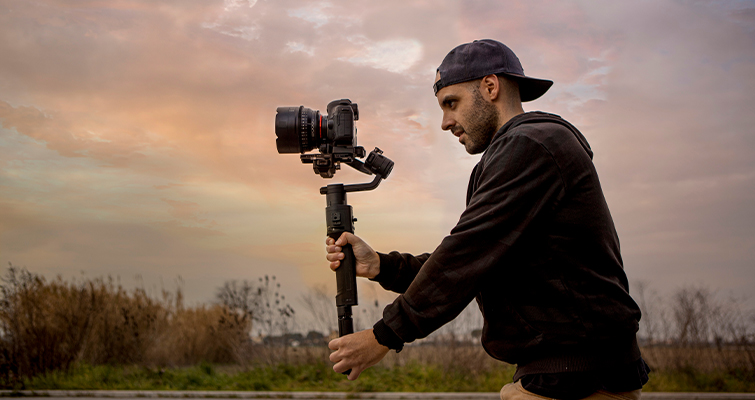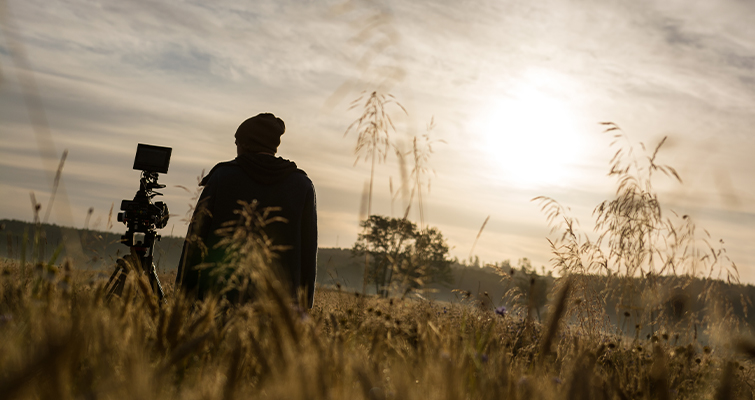
Say Goodbye to the Canon DSLR
As an homage to Canon’s EOS line of cameras, we asked a few PremiumBeat contributors to weigh in on how these cameras impacted their career.
We are gathered here today to honor the memory of the Canon DSLR. It forever changed the lives of many a filmmaker and put cinematic visuals into the reach of those without cinematic funding.
Ok, I’m not too sure how long I could go on with that act, but yes, today we’re talking about the death of the Canon DSLR. Well, to a degree, I guess that’s hyperbole.
See, many of us knew the DSLR was now a tool of yesterday. Filmmaking and photography websites have been talking about the death of the DSLR for the last several years—us included—as seemingly every leading camera manufacturer has gone full steam ahead with their mirrorless lines.
Last year, we reported that nearly twenty-six EF lenses had been discontinued, and I’m sure that number is even more significant today. So, why are we writing a memoriam now? Well, because of a comment from Canon CEO Fujio Mitarai. In December, in an interview with Yomiuri Shimbun, a major newspaper in Japan, he said:
Canon’s SLR flagship model is known as the EOS-1 series, the first of which appeared in 1989. The latest model—EOS-1D X Mark III—released in 2020, will be the last model, in fact.
The market needs are acceleratingly shifting to mirrorless cameras.
– Fujio Mitarai, CEO
Initially, many outlets covered this as the end of the DSLR—confirmation from the top, right? However, a Canon spokesperson reached out to PetaPixel and DPReview to state:
The broad details of Mr. Mitarai’s interview as described in the article are true. However, while estimated as “within a few years,” exact dates are not confirmed for the conclusion of development/termination of production for a flagship DSLR camera.
– Canon

So, Canon is basically saying: Yes, we won’t see another flagship DSLR. No it’s not the end of the DSLR, but yes, we’re directing all focus onto mirrorless.
Which, in translation (to me at least) reads: We’re pulling the plug on DSLRs over the next few years, just not officially—yet.
With or without the official word from Canon, the termination of the 1D is certainly a signal to suggest the official end of the Canon DSLR is on the horizon. And, while I’m no longer a Canon DSLR user, there’s a sense of sadness hearing this, as, without the Canon DSLR, namely the 5D Mk II and 550D, I wouldn’t be in this position today.
That also goes for numerous millennials who are now working filmmakers. Canon did kickstart the DSLR revolution, and there’s so much to be thankful for.
Over the years, I’ve frequently talked about how the 550D and 5D Mk II were pivotal tools to the start of my career back in 2009. Therefore, today, instead of hearing myself talk about the 5D again, we’ve asked a number of our contributors what the Canon DSLRs did for them.
Mike Maher
I legitimately would not have a career without the DSLR video boom. I started shooting on tape in the late 90s, but when I got my own Canon 7D and later Canon 5D Mk II, I could book serious clients and deliver projects that looked like they were shot well out of my non-existent budget.
Before I dropped out of film school, all we could rent from the university were outdated ENG cameras. A few of my friends all took the risk of spending the little money we had on getting DSLR cameras, a nifty-fifty, and maybe two cards. It changed everything.
When I was trying to get a job after school, nearly every video job required experience with Canon DSLR cameras. Since I’d decided to purchase my own camera, I was hired on the spot for multiple agency and client gigs.
It wasn’t just the camera itself. You also have to realize this was when most people could switch to an entirely digital post-production process. I didn’t have to transfer tapes anymore. I could dump footage directly into my laptop, fire up Final Cut Pro 7, and have a finished edit within hours.
This was the foundation of the entire industry, and it made video production accessible to everyone. There will always be a new latest and greatest camera everyone is talking about, but in that pocket of time, the Canon DSLRs changed the game, and it’s a shame to see that they’re rarely thought of in this space anymore.
Maybe it’s the success of the Cinema EOS line in the documentary world or competition from the likes of Sony and Blackmagic, but it’s a bummer to see the end of this era approaching.
Todd Blankenship
Everything changed when the Canon 5D MkII came out (not to mention the magic lantern firmware). All of a sudden, we’re talking about a full-frame cinema DSLR that was capable of 24fps.
Mere months later, Canon released the slightly cheaper super 35 Canon 7D. Suddenly, you could shoot cinematic footage at 24fps on a camera that was lighter, cheaper, and more versatile.
At the time, just to have interchangeable lenses on my giant, heavy EX1 rig, I had to use an entire adapter system called a “Letus35 adapter.” If you’re not familiar, it was a super-heavy, giant attachment that went on the front of the camera, and all it achieved was interchangeable lenses. Now, for around a third of the price of that rig, I could have interchangeable lenses on a lightweight handheld system that could also take crisp photos.
Naturally, I sold the EX1 immediately and jumped on the bandwagon with my very own Canon 7D. With the extra money, I was able to buy three L-Series lenses (all of which I still use to this day), all the necessary support hardware, and an excellent big Small HD monitor.
Good times.

This was the dawn of a new era. Modular camera rigs where the camera body itself was just the image-gathering device, and you build all of the creature comforts around the brain itself (RED cameras notwithstanding).
Shoulder supports, ND filters, monitors, basically anything you think of when you think of “camera rigging” started to blow up. It just became the norm from that point on. But, it’s easy to forget about those early days when just being able to swap lenses was a big deal.
I’m looking forward to this next era of compact cinema camera filmmaking, and I await more developments that will shake up the entire industry in the way that cinema DSLRs did.
Jourdan Aldridge
I still remember the very first camera I ever owned. It was a Canon 7D that I bought used from the video production company I was working with at the time. Our whole studio was built around the Canon cameras, so I’d learned the ropes with the 7D, obviously the 5D (MK II), and the C300 for our higher-end shoots.
I’ve written about this camera before for PremiumBeat. However, it’d still be an understatement that I perhaps knew it more completely, thoroughly, and in-and-out than anyone in the world of video production. I probably used this camera for over a thousand projects and shoots for the seven or eight years that I owned and used it.
Like the 5D as well, there was just an instant familiarity that I felt with these DSLRs. They were so easy to learn, yet just sophisticated enough that you could really put them through the wringer for getting the best footage possible in just about any setting.

I’ve looked back at some of the footage quality from some of these early, run-and-gun type projects, and (while I might cringe at some of my composition decisions) overall the images still hold up pretty well when played back on Vimeo for watching on a laptop or your phone.
I won’t say I’m overly nostalgic for these DSLR cameras at this point, though. There are just so many better options these days. However, I do think that at the current rate of innovation, the thought that you might buy, own, and use a camera for five-plus years is pretty crazy—which means any true connection or brand loyalty might simply be harder to build up.
Julian Mitchell
The disruption that the Canon 5D Mk II brought to filmmaking was instant and fast-moving. Fast enough, in fact, to catch some significant broadcasters. As soon as DOPs, producers, and directors saw the 5D Mk II’s aesthetic and creamy depth of field, they wanted to use it.
But, because of its lack of timecode, anything needing sound sync was out of the question, unless you use some complicated workarounds. That’s why the camera began its life in the commercials and music video genre.
But, it wasn’t long before drama directors wanted that look for themselves. Back in 2010, broadcasters like the BBC were creating standard practices for high definition in their programs. They had a remit to broadcast in HD and fiercely protected that approval to guide program-makers to use the higher resolution in their content mostly.

An HD program meant they could only support 25% of it shot on a non-HD camera.
Director Charles Sturridge was to direct a drama called Road to Coronation Street, which celebrated the beginnings of the famous British soap. He tracked the new Canon 5D Mk II and wanted to use it for the drama.
We shot a lot of tests, which looked wonderful, but the engineers at the BBC were saying that there were aliasing and moiré patterns that would make them fail the use of the camera for HD broadcast.
– Charles Sturridge, Director
The camera was consequently moved to the unapproved camera list.
The producers for the drama ended up using the 5D for most of the shoot, ignoring the directions from the BBC’s technical department. They were only permitted to use it on the tenth day of a fourteen-day shoot.
As a backup, they had a Sony 750 camcorder with a Pro35 adapter and Zeiss Prime lenses to simulate the shallow depth of field that made the 5D so seductive. To protect themselves, they ended up shooting scenes on both cameras while they waited for official approval.
The Pro35 was like standard 35mm, but the 5D is like VistaVision, twice the size.
– Charles Sturridge, Director
The Road to Coronation Street won a BAFTA in 2011 for Best Single Drama.
Logan Baker
The first real camera I owned was a Canon 60D. I bought it my first year of college, once I started my journey at film school. There are a couple of things I can say about my experiences and overall feelings about this camera.
First, I knew nothing of exposure, and frankly was not interested in taking the time to learn about how to get the most from this capable beast.
Second, even though the camera served as gear I used to finish school projects and extra curricular activities, I had more fun shooting little short films and passion projects than ever before.
The images produced from my 60D (with a kit lens) were still ten times better than the cameras I had access to in high school. The DSLR revolution was a quantum leap for aspiring filmmakers, and single-handedly contributed to YouTube’s success in the early 2010s—quote me on that.
It’s sad to see it go, but with the dawn of mirrorless and every other wildly-capable camera being released now, new filmmakers are in even better hands than ever before.

How about a few new releases, gear-talk, and production advice? We’ve got you covered:
- The 5 Most Affordable Matte Boxes for Your Camera in 2022
- Create Better Establishing Shots with These Photography Techniques
- What Makes the iPhone 13’s Cinematic Mode Cinematic?
- Attack of the Mini Drones – Smaller Crafts Can Offer More Value
- 5 YouTubers to Follow for Creative Cinematography
Cover image via Canon.





